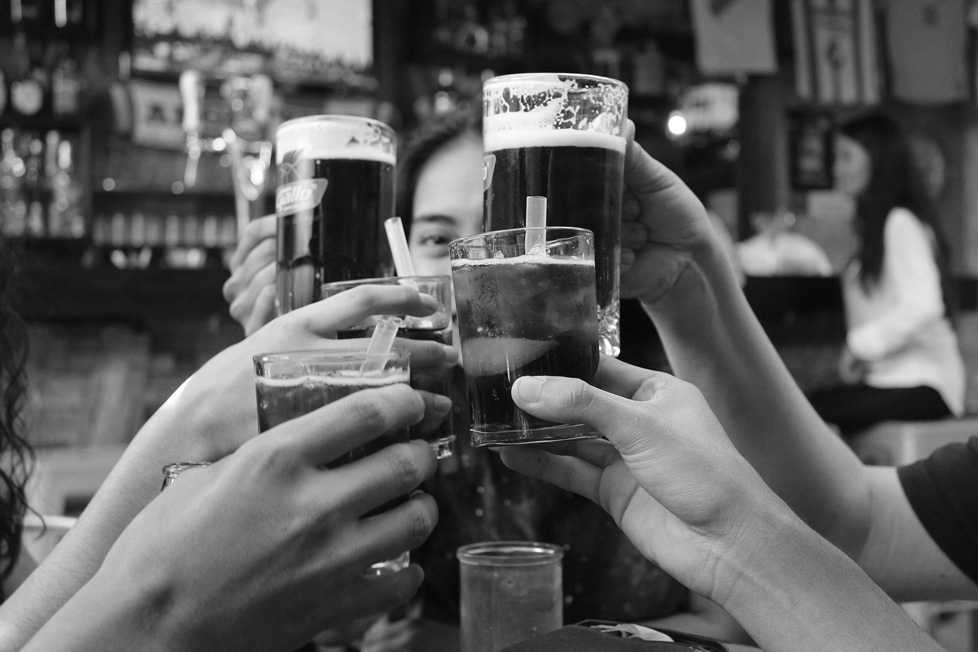Felice Nollaig na mBan: e siamo subito in Irlanda!
Nollaig na mBan è una festa irlandese antichissima, che celebra la donna e la sua energia femminile. E cade intorno al 6 gennaio di ogni anno.

Nollaig na mBan è una festa irlandese antichissima, che celebra la donna e la sua energia femminile. E cade intorno al 6 gennaio di ogni anno.

(English translation below)
Ieri ho fatto un meraviglioso viaggio nell’Irlanda più fantastica e fiabesca.
E senza uscire di casa. A volte si può viaggiare anche così, grazie ad un whatsapp e alla nostra fantasia. Il whatsapp mi è arrivato da una carissima amica irlandese, Mary, e mi augurava happy Nollaig na mBan, ovvero felice Women’s Little Christmas.
Prima che tutto precipitasse nel baratro della pandemia, io e Mary ci vedevamo spesso, almeno una volta l’anno. Ora che l’emergenza sanitaria ha spezzato ogni traiettoria di viaggio, anche i nostri incontri sono evaporati come brina al sole. Eppure restiamo aggrappate alla tecnologia che ci fa sentire vicine.
Ma veniamo a noi, cosa è il Nollaig na mBan? Si tratta di una tradizione che non conoscevo, e che mi ha fatto sgranare gli occhi dallo stupore per la bellezza della storia e il fascino che sprigiona. Ed è proprio Mary a raccontarmela.
C’era una volta in Irlanda il popolo dei Celti, che celebrava l’energia femminile con una festa dedicata alle donne della terra e ai loro cuori. Era una ricorrenza comandata, che permetteva alle donne di fare una grande festa esclusivamente declinata al femminile, senza la presenza dei loro uomini.
E così le donne lasciavano le faccende di casa per un giorno e si dirigevano nei boschi verso i cerchi delle fate. Giunte lì, cominciavano danzare tra questi cerchi disegnati sul suolo con i fiori, bevendo idromele e benedicendo la Madre Terra affinché la primavera producesse un buon raccolto. La data di questa festa non era fissa, poteva variare dal 3 al 6 gennaio. Ma comunque coincideva con la fine delle celebrazioni natalizie.
Conosciuto come Nollaig na mBan in irlandese, il Women’s Little Christmas sta tornando ad essere una tradizione molto forte in Irlanda. Al giorno d’oggi la festa è particolarmente sentita in alcune contee, come Cork e Kerry, e in generale nell’Irlanda occidentale e coinvolge moltissime donne, che si incontrano tra amiche, sorelle, madri, zie, giovani ed anziane, a pranzo o a cena per celebrare l’energia femminile. In inglese si chiama Women’s Little Christmas perché in quel giorno, da tradizione, gli uomini si assumono l’onere delle faccende domestiche per l’intera giornata, permettendo alle donne di riposare, uscire e divertirsi.
L’autore irlandese Kevin Danaher, nel suo libro The year in Ireland, racconta che se il Natale era caratterizzato da carne di manzo e whisky, piatti tipicamente maschili, il piccolo Natale delle donne vedeva invece sulle tavole le leccornie preferite dalle donne, e cioè soprattutto torte, pasticcini, tè e vino. Una tradizione di cui però rimangono pochi testi scritti, perché le donne se la tramandano di madre in figlia da generazioni. Ma alcuni media irlandesi ne parlano con approfondimenti e testimonianze, come il quotidiano The Irish Times e il magazine Celtic Life.
La festa del Nollaig na mBan era anche un modo per concedere alle donne un giorno di riposo e di relax per se stesse, dopo le grandi fatiche per i preparativi e i pranzi natalizi. Una festa semplice dunque, ma anche un segno di rispetto verso l’universo femminile. Una festa per riunirsi tra donne e chiacchierare mangiando una focaccia di ribes davanti ad una tazza di tè.
Alcuni raccontano che durante quella notte speciale venivano accese 12 candele ad ogni finestra, per illuminare il buio, e questo era particolarmente emozionante quando l’elettricità ancora non esisteva. Ancora oggi sembra che l’usanza delle candele sia molto forte sulle isole Aran, di fronte alla costa occidentale dell’Irlanda.
Negli ultimi anni il fenomeno è in crescita, e quest’antichissima tradizione sta trovando nuovo fulgore, forse sotto la spinta culturale di alcuni movimenti globali che intendono restituire alla donna quelle libertà che rischiano continuamente di essere erose da idee misogine e patriarcali.
Ma poiché oggi le donne non sono più le custodi del focolare domestico come nell’antichità, il significato della festa sta anche virando verso declinazioni più moderne e più ampie, come festa dell’amicizia e della sorellanza.
Io non ho mai partecipato a questa festa. E anzi, fino ad oggi non ne conoscevo l’esistenza. Ma da quanto mi ha raccontato Mary, pare che ci sia sempre stata un’atmosfera speciale in questi incontri tutti al femminile, un qualcosa di indefinibile e magico. E’ una festa che per certi versi assomiglia alla festa della donna dell’8 marzo, ma è molto più sentita, perché le donne si sentono vicine, solidali, unite come non mai, e questo le spinge a confidarsi, a raccontarsi, ad aprirsi.
E allora sono infinitamente grata a Mary di avermi fatto conoscere il Nollaig na mBan e di permettermi di raccontarlo, a modo mio, a tutte le donne italiane ed europee, e a tutti coloro la cui parte femminile è particolarmente dominante. Felice Nollaig na mBan!

ENGLISH VERSION
Yesterday I took a wonderful trip to the most fantastic and fairytale Ireland.
And I did it without leaving the house. Sometimes you can travel in this way too, thanks to a whatsapp and our imagination. The whatsapp came to me from a very dear Irish friend, Mary, and she wished me happy Nollaig na mBan, or happy Women’s Little Christmas.
Before everything plunged into the abyss of the pandemic, Mary and I used to meet often, at least once a year. Now that the health emergency has broken all travel trajectory, even our meetings have evaporated like frost in the sun. Yet we cling to the technology that makes us feel close.
But let’s get to us, what is Nollaig na mBan? It is a tradition that I did not know, and that made me widen my eyes with amazement at the beauty of the story and the charm it releases. And it is Mary who tells it to me.
Once upon a time in Ireland, the people of the Celts celebrated feminine energy with a feast for the Ladies of the Land and their hearts. It was an obligatory feast, that allowed women to have a massive party exclusively for women, without the presence of their men.
And so the women left the house chores for a day and headed into the woods towards the fairy rings. Once there, they began dancing among these rings drawn on the ground with flowers, drinking mead and blessing Mother Earth so that spring would bring forth a good crop. The date of this feast was not stable, but it ranged from the 3rd to the 6th of January. But it still coincided with the end of the Christmas celebrations.
Known as Nollaig na mBan in Irish, Women’s Little Christmas is becoming a very strong tradition in Ireland again. Nowadays the feast is particularly felt in some counties, such as Cork and Kerry, and in general in the West of Ireland and involves many women, who meet among friends, sisters, mothers, aunts, young and old, for lunch or dinner to celebrate feminine energy. It is called Women’s Little Christmas because on that day, by tradition, the men take care of the housework for the whole day, allowing women to rest, go out and have fun.
The Irish author Kevin Danaher, in his book The year in Ireland, says that if Christmas was characterized by beef and whiskey, typically masculine dishes, the little Christmas of women instead saw on the tables the treats preferred by women, especially cakes, pastries, tea and wine. A tradition of which, however, few written texts remain, because women have handed it down from mother to daughter for generations. But some Irish media talk about it with insights and testimonies, such as The Irish Times newspaper and Celtic Life magazine.
The feast of Nollaig na mBan was also a way to give women a day of rest and celebration for themselves, after the great efforts of preparations and Christmas lunches. A simple feast then, but also a sign of respect for the female universe. A feast to get together between women and chat while eating currant focaccia over a cup of tea.
Some say that during that special night there was a habit of lighting 12 candles in each window, to light up the darkness, and this was particularly exciting when electricity did not yet exist. Even today it seems that the custom of candles is very strong on the Aran Islands, off the west coast of Ireland.
In recent years the phenomenon has been growing, and this ancient tradition is finding new splendour, perhaps under the cultural thrust of some global movements that intend to restore to women those freedoms that are continually in danger of being eroded by misogynistic and patriarchal ideas.
But since today women are no longer the custodians of the home as in ancient times, the meaning of the celebration is also veering towards more modern and broader declinations, as a celebration of friendship and sisterhood.
I have never attended this feast. And indeed, until today I did not know of its existence. But from what Mary told me, it seems that there has always been a special atmosphere in these all-female encounters, something indefinable and magical. It is a feast that in some ways resembles the women’s day of 8 March, but it is much more felt because women feel close, supportive, united as never before, and this pushes them to confide in each other, to tell each other, to open up.
So I am infinitely grateful to Mary for introducing me to this feast and allowing me to tell it, in my own way, to all Italian and European women, and to all those people whose female part is particularly dominant. Happy Nollaig na mBan!
